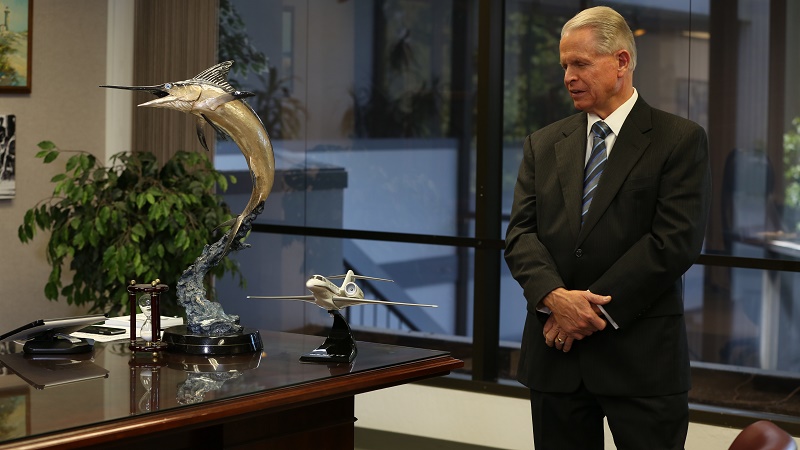
Adapted from Tough Things First, by Ray Zinn
My stall horn sounded, telling me I was about to crash into the Tehachapi Mountains.
A stall horn will wake the dead, and is designed to assure the pilot knows his air speed has dropped off to a dangerous velocity. At first, this didn’t make sense to me. The autopilot was doing its job, the plane felt as if it were performing correctly. But because I had started daydreaming, I had quit scanning my instruments and thus had not seen the creeping indicators that a dangerous situation was developing.
We were approaching the Tehachapi Mountains and the nose of my airplane had begun to pitch up as my autopilot tried to maintain my altitude of 12,000 feet. Suddenly, my stall horn blared and woke me from my daydreaming. For this aircraft, the stall horns sound when the plane’s air speed drops to 60 miles per hour. Now fully alert again, I noticed we were losing altitude at the rate of 1,500 feet per minute – I was literally being sucked into the mountain due to an extreme downdraft caused by the Tehachapis’ Bernoulli affect.
The Bernoulli affect is caused by the V-shape of the Tehachapi Mountains and the high-velocity winds coming from the north. The winds compress into the V-shaped slopes and create a vacuum on the backside of the mountain, the one I was approaching on autopilot. That vacuum was quite literally sucking me into the mountain. My air speed had dropped 100 miles per hour and the autopilot compensated by lifting the nose of the air plane 20 degrees. We were a few hundred feet from crashing.
We were in panic mode. I immediately switched off the auto pilot and pitched the nose of the airplane down. Los Angeles Flight Watch came on the radio because they noticed my ground speed had dropped to a mere 40 miles per hour and wanted to know if I was all right. “I’m a little busy right now. I’ll get back to you,” I replied. I was in the process of turning the plane a full 180 degrees and reversing my course.
As the eyes of the organization, an entrepreneur is constantly scanning the instruments – their discreet set of key indicators – but they also need to devise their own stall horns. Within every business, and tailored to each industry, there exist a collection of warning signals concerning the changing corporate status and market conditions – much like a pilot needing to know how much fuel remains in the airplane’s tanks (internal condition) and what is the wind direction (external conditions). You need this information constantly, you need it packaged in rapidly understandable format, you have to understand the relationships between different metrics (as you would the relationship between air speed and altitude) and you need realistic markers of dangerous variations in the data to trigger your stall horns.
Watching the gauges gives you an idea of the strength of your business.
I looked at Micrel’s gauges every single day: a review of the bookings, inventory levels and changing customer demand. If it looked like bookings were increasing, I might let the inventory go up. If I saw bookings were sliding, I could start ratcheting down inventories so I didn’t get caught sinking cash into products that were not moving. I examined receivables to see how collections were going. Watching collections tells you about cash flow and if cash is coming in as it should. I also looked at the quality reports but on a weekly basis. I reviewed them to see what customer returns looked like so I could know if Micrel had any legal exposure or quality issues. I looked at the inventory’s direction. I looked at pricing changes. I looked at factory utilization and I also looked at lead times. I met weekly with my staff to go over business and I dug into the sales numbers for each of the territories.
Focus is essential, and filters are important, but neither can be allowed to blind the entrepreneur. Scanning key indicators and allowing for important alerts keeps an entrepreneur from killing their own company. And, frankly, start-up CEOs are most often responsible for the deaths of their businesses and their dreams.
